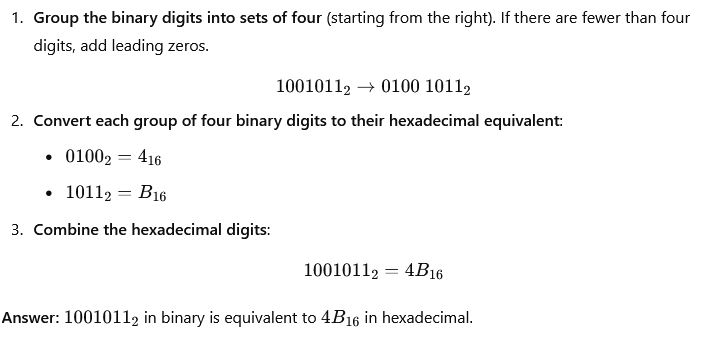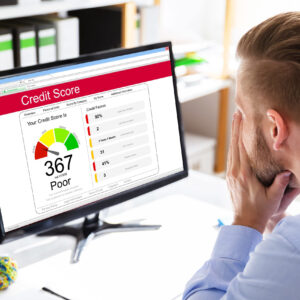Access a comprehensive collection of COS111 past questions and answers to enhance your exam preparation. Study effectively with detailed explanations and participate in the quiz to improve your chances of success.
COS111 past questions and answers 1
Question 1: Which of these pairs comprises input and output devices respectively?
(a) mouse and light pen
(b) mouse and joystick
(c) card reader and monitor
(d) all of these
Answer: (c) Card reader and monitor
Explanation: An input device allows data to be sent to the computer (e.g., card reader), while an output device sends data out from the computer to the user (e.g., monitor).
COS111 past questions and answers 2
Question 2: Blaise Pascal developed the stepped reckoner in the year __.
(a) 1617
(b) 1671
(c) 1716
(d) 1761
(e) 1642
Answer: (b) 1671
Explanation: The Stepped Reckoner, a mechanical calculator capable of performing arithmetic operations, was developed by Gottfried Wilhelm Leibniz in 1671, not Blaise Pascal. However, Pascal invented the Pascaline, an earlier mechanical calculator, in 1642.
COS111 past questions and answers 3
Question 3: ______ component of the CPU sends control signals that determine when data is to be transferred from primary memory to registers.
(a) Arithmetic and Logical Unit
(b) Control Unit
(c) Memory Data Unit
(d) none of these
Answer: (b) Control Unit
Explanation: The Control Unit (CU) of the CPU directs the operation of the processor. It sends control signals to manage data flow between the memory and the registers.
COS111 past questions and answers 4
Question 4: Which of these describes the electronic part of the computer?
(a) software
(b) hardware
(c) peripherals
(d) all of these
Answer: (b) Hardware
Explanation: Hardware refers to the physical components of a computer system, such as the CPU, memory, and peripherals. Software, on the other hand, refers to the programs that run on the hardware.
COS111 past questions and answers 5
Question 5: Which of the following is not a Mouse button?
(a) Bold Mouse Button
(b) Italics Mouse Button
(c) Bottom Mouse Button
(d) all of these
Answer: (d) All of these
Explanation: There is no such thing as a Bold, Italics, or Bottom Mouse button. A typical mouse usually has left, right, and sometimes middle buttons.
COS111 past questions and answers 6
Question 6: In computing, data is processed by performing ____________ and _____________ manipulation.
Answer: Arithmetic and logical
Explanation: Data in computers is processed by performing arithmetic operations (like addition and subtraction) and logical operations (like comparisons).
COS111 past questions and answers 7
Question 7: The two-digit number system known as binary used in representing numbers in computers is made of ____.
(a) 0 to 7
(b) 0 to 9
(c) 0 to 1
(d) 1 to 2
Answer: (c) 0 to 1
Explanation: The binary number system consists of only two digits: 0 and 1, which are used to represent all data in computers.
COS111 past questions and answers 8
Question 8: In computing numbers in base, the following bases are commonly considered except _______.
(a) Two
(b) Four
(c) Eight
(d) Sixteen
Answer: (b) Four
Explanation: The commonly used bases in computing are binary (base 2), octal (base 8), and hexadecimal (base 16). Base 4 is not commonly used.
COS111 past questions and answers 9
Question 9: Converting decimal number 18 to octal results in ______.
(a) 1
(b) 10
(c) 20
(d) 22
Answer: (d) 22
Explanation: The decimal number 18 converts to octal as 22 (18 ÷ 8 = 2 remainder 2).
COS111 past questions and answers 10
Question 10: Given a number 4163, what is the Least Significant bit and most significant bit?
(a) 1, 6
(b) 4, 6
(c) 1, 3
(d) 3, 4
Answer: (d) 3, 4
Explanation: In the number 4163, the Least Significant Bit (LSB) is the rightmost digit (3), and the Most Significant Bit (MSB) is the leftmost digit (4).
COS111 past questions and answers 11
Question 11: The cheapest and smallest range of computers that can fit on a desk or are portable is ________.
(a) minicomputers
(b) mainframe
(c) microcomputer
(d) supercomputer
Answer: (c) Microcomputer
Explanation: Microcomputers, also known as personal computers, are small, affordable, and designed for individual use, unlike minicomputers, mainframes, or supercomputers.
COS111 past questions and answers 12
Question 12: The following codes have been constructed to handle alphanumeric data except:
(a) BCB
(b) CD
(c) EBCDIC
(d) ASCII
Answer: (a) BCB
Explanation: BCD (Binary Coded Decimal), EBCDIC, and ASCII are all encoding schemes used to represent alphanumeric data, but BCB is not a standard encoding scheme.
COS111 past questions and answers 13
Question 13: ______ is not a measure for judging an application’s suitability for use of computers.
(a) Volume
(b) cost
(c) speed
(d) complexity
Answer: (a) Volume
Explanation: The suitability of an application for computer use is generally judged by factors like cost, speed, and complexity, but not by volume.
COS111 past questions and answers 14
Question 14: The three basic ways that computers support education are as follows except:
(a) High electricity tariff
(b) Administrative and guidance
(c) Object of instruction
(d) vehicle for instruction
Answer: (a) High electricity tariff
Explanation: Computers support education through administrative and guidance systems, as objects of instruction, and as vehicles for instruction. High electricity tariffs are unrelated to this support.
COS111 past questions and answers 15
Question 15: The smallest addressable unit for information storage in the computer is called _____.
(a) Bit
(b) Byte
(c) Nibble
(d) Word
Answer: (b) Byte
Explanation: A byte is the smallest addressable unit of data in a computer, which typically consists of 8 bits. While a bit is the smallest unit of data, it is not addressable by itself in most systems. A byte is used as the basic unit of memory addressing in most computer architectures.
COS111 past questions and answers 16
Question 16: The two-digit number system known as binary used in representing numbers in computers comprises:
(a) 0 to 7
(b) 0 to 9
(c) 0 to 1
(d) 1 to 2
Answer: (c) 0 to 1
Explanation: The binary number system uses only two digits: 0 and 1, to represent all data in a computer.
COS111 past questions and answers 17
Question 17: A byte is made up of ______ binary digits.
(a) 16
(b) 10
(c) 8
(d) 2
Answer: (c) 8
Explanation: A byte is composed of 8 bits and is the basic unit of data storage in computing.
COS111 past questions and answers 18
Question 18: Converting 111101₂ to decimal gives ____.
(a) 61
(b) 22
(c) 35
(d) 53
Answer: (d) 53
Explanation: The binary number 111101₂ converts to decimal as 53 (1×2⁵ + 1×2⁴ + 1×2³ + 1×2² + 0×2¹ + 1×2⁰ = 32 + 16 + 8 + 4 + 0 + 1 = 53).
COS111 past questions and answers 19
Question 19: Converting 1001011₂ to hexadecimal gives ______.
(a) 8216
(b) 5216
(c) 4B16
(d) 5C18
Answer: (c) 4B₁₆
Explanation:

COS111 past questions and answers 20
Question 20: The memory unit of the CPU stores:
(a) Application programs
(b) System programs
(c) Inbuilt programs from manufacturers
(d) Utility Programs
Answer: (c) Inbuilt programs from manufacturers
Explanation: The memory unit of the CPU typically stores inbuilt programs, also known as firmware, which are embedded by the manufacturers.
COS111 past questions and answers 21
Question 21: A software system could be designed using any of the following approaches, except:
(a) Botton-up
(b) Bottom-down
(c) Top-down
(d) None
Answer: (b) Bottom-down
Explanation: Common design approaches include top-down and bottom-up, but “bottom-down” is not a recognized approach.
COS111 past questions and answers 22
Question 22: One of these is not an example of a computer processor:
(a) Core i1
(b) Core i3
(c) Core i7
(d) Core i9
Answer: (a) Core i1
Explanation: Intel’s processor line includes Core i3, Core i5, Core i7, and Core i9, but there is no Core i1 processor.
COS111 past questions and answers 23
Question 23: What will be the balance of mobile data on your phone if 400MB is used out of the 1.3GB total data bundle?
(a) 600KB
(b) 600MB
(c) 700KB
(d) 900MB
Answer: (d) 900MB
Explanation: 1.3GB is equivalent to 1300MB. If 400MB is used, the balance is 900 (1300MB – 400MB = 900MB).
COS111 past questions and answers 24
Question 24: Algorithm is defined as _______ solution approach.
(a) step-by-step
(b) graphical
(c) pictorial
(d) diagrammatical
Answer: (a) step-by-step
Explanation: An algorithm is a step-by-step procedure or formula for solving a problem. It consists of a sequence of instructions that are followed to achieve a desired outcome.
COS111 past questions and answers 25
Question 25: One of these shapes is not a flowchart symbol.
(a) Square
(b) Oval
(c) Rhombus
(d) Diamond
Answer: (a) Square
Explanation: Common flowchart symbols include the Oval (for start/end), Rhombus (for decision points), and Diamond (which is another name for a rhombus). A square is not a standard flowchart symbol.
COS111 past questions and answers 26
Question 26: The essential parts of a computer system include the following except _______.
(a) Memory, RAM, processor
(b) Memory, ROM, CPU
(c) Memory, CPU, peripherals
(d) ALL
Answer: (d) ALL
Explanation: Options (a), (b), and (c) all list essential components of a computer system. “ALL” is not correct because it implies that all options are valid, but the question asks for an exception, meaning one of these options should not be essential, which isn’t the case.
COS111 past questions and answers 27
Question 27: One is a repetition statement in computer programming.
(a) IF-THEN
(b) IF-THEN-ELSE
(c) WHILE
(d) SWITCH-CASE
Answer: (c) WHILE
Explanation: The WHILE loop is a repetition statement in programming that repeatedly executes a block of code as long as a specified condition is true. IF-THEN, IF-THEN-ELSE, and SWITCH-CASE are control statements, not repetition statements.
COS111 past questions and answers 28
Question 28: A word length of 128 bits system is approximately _______ bytes.
(a) 2
(b) 8
(c) 16
(d) 32
Answer: (c) 16
Explanation: A word length of 128 bits is equivalent to 16 bytes, since 1 byte = 8 bits (128 bits ÷ 8 bits/byte = 16 bytes).
COS111 past questions and answers 29
Question 29: The following is related to the computer VDU, except:
(a) pixels
(b) resolution
(c) dimensions
(d) contrast
Answer: (c) dimensions
Explanation: Video Display Units (VDUs) are related to concepts like pixels (the smallest unit of display), resolution (clarity of the display), and contrast (difference between light and dark areas). “Dimensions” refers to physical size, which is not directly related to display quality in the same context as the others.
COS111 past questions and answers 30
Question 30: Which of these components is an output device?
(a) Keyboard
(b) Printer
(c) Scanner
(d) Microphone
Answer: (b) Printer
Explanation: A printer is an output device that produces a physical copy of digital documents. The keyboard, scanner, and microphone are input devices.
COS111 past questions and answers 31
Question 31: Charles Babbage is known for his work on which early computing device?
(a) Analytical Engine
(b) Difference Engine
(c) Pascaline
(d) ENIAC
Answer: (b) Difference Engine
Explanation: Charles Babbage designed the Difference Engine, an early mechanical computer, while the Analytical Engine was another of his inventions. The Pascaline was developed by Blaise Pascal, and the ENIAC was a later electronic computer.
COS111 past questions and answers 32
Question 32: The component of the computer that manages and coordinates all the activities is the:
(a) Hard Drive
(b) Monitor
(c) Central Processing Unit (CPU)
(d) RAM
Answer: (c) Central Processing Unit (CPU)
Explanation: The CPU is the central component that manages and coordinates all activities in a computer. The hard drive, monitor, and RAM serve different functions.
COS111 past questions and answers 33
Question 33: Which term describes the physical parts of a computer system?
(a) Software
(b) Firmware
(c) Hardware
(d) Peripherals
Answer: (c) Hardware
Explanation: Hardware refers to the physical components of a computer system, such as the CPU, motherboard, and peripherals. Software refers to programs and operating systems, while firmware is a type of software embedded in hardware.
COS111 past questions and answers 34
Question 34: Which of the following is not a standard computer file extension?
(a) .exe
(b) .docx
(c) .html
(d) .txtx
Answer: (d) .txtx
Explanation: The file extension .txtx is not standard. Common file extensions include .exe (executable file), .docx (Word document), .html (HTML file), and .txt (plain text file).
COS111 past questions and answers 35
Question 35: The basic unit of data in a computer’s memory is known as a:
(a) Bit
(b) Byte
(c) Nibble
(d) Word
Answer: (a) Bit
Explanation: A bit is the smallest unit of data in a computer, representing a binary value of 0 or 1. A byte is made up of 8 bits, a nibble is 4 bits, and a word is a group of bytes.
COS111 past questions and answers 36
Question 36: The binary number system uses which digits?
(a) 0 to 9
(b) 0 to 1
(c) 0 to 7
(d) 1 to 2
Answer: (b) 0 to 1
Explanation: The binary number system uses only two digits, 0 and 1. This system is fundamental to computer operations.
COS111 past questions and answers 37
Question 37: Converting decimal number 25 to binary results in:
(a) 10101
(b) 11001
(c) 10010
(d) 10110
Answer: (a) 10101
Explanation: The decimal number 25 converts to binary as 10101 (25 in decimal is equal to 1×2⁴ + 0×2³ + 1×2² + 0×2¹ + 1×2⁰).
COS111 past questions and answers 38
Question 38: Which of the following is a valid binary number?
(a) 1234
(b) 1010
(c) 2A3B
(d) 123AB
Answer: (b) 1010
Explanation: Binary numbers consist only of the digits 0 and 1. 1010 is a valid binary number, while the other options contain non-binary characters.
COS111 past questions and answers 39
Question 39: The following is not a type of computer memory:
(a) Cache
(b) Register
(c) ROM
(d) Pixel
Answer: (d) Pixel
Explanation: Cache, register, and ROM are types of computer memory. A pixel is a unit of display resolution and not a type of memory.
COS111 past questions and answers 40
Question 40: The smallest unit of storage that can be addressed by the computer is a:
(a) Bit
(b) Byte
(c) Nibble
(d) Word
Answer: (a) Bit
Explanation: A bit is the smallest unit of storage and is the basic building block of all data in computers.
COS111 past questions and answers 41
Question 41: Which of the following is not a standard programming language?
(a) Python
(b) Java
(c) HTML
(d) Assembly
Answer: (c) HTML
Explanation: HTML (Hypertext Markup Language) is a markup language used for creating web pages, not a programming language. Python, Java, and Assembly are programming languages.
COS111 past questions and answers 42
Question 42: Which component of a computer is used for temporary storage while a program is running?
(a) Hard Drive
(b) RAM
(c) ROM
(d) CPU
Answer: (b) RAM
Explanation: RAM (Random Access Memory) is used for temporary storage of data that is actively being used or processed by the CPU. The hard drive and ROM provide permanent storage, while the CPU processes data.
COS111 past questions and answers 43
Question 43: Which of these is a method for organizing and managing large amounts of data?
(a) Database
(b) Spreadsheet
(c) Text Editor
(d) Web Browser
Answer: (a) Database
Explanation: A database is designed to organize, manage, and store large amounts of data efficiently. Spreadsheets and text editors are more suited for smaller amounts of data, and a web browser is used for accessing the internet.
COS111 past questions and answers 44
Question 44: The following are input devices, except:
(a) Mouse
(b) Keyboard
(c) Monitor
(d) Scanner
Answer: (c) Monitor
Explanation: A monitor is an output device used to display information from the computer. Mouse, keyboard, and scanner are input devices used to provide data to the computer.
Practice COS111 past questions and answers Quiz
Ready to ace your COS111 exams? Practicing with quizzes is one of the most effective ways to solidify your understanding of the material. By taking the COS111 quiz, you’ll be able to:
- Test Your Knowledge: Identify areas where you excel and pinpoint topics that need more attention.
- Boost Your Confidence: Familiarize yourself with the types of questions you might encounter in the exam, helping to reduce anxiety on test day.
- Reinforce Learning: Quizzes help reinforce the concepts you’ve learned by applying them in a practical, exam-like setting
Don’t wait until the last minute—start practicing now! The more you quiz yourself, the better prepared you’ll be for success in COS111. Take the time to go through the questions carefully, review your answers, and make note of any areas that need improvement.






